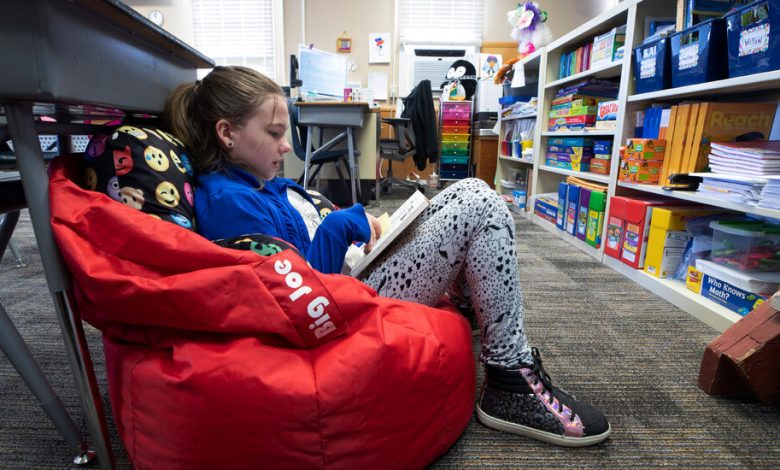What to Know About the Science of Reading

During an era of intense politicization of education, there has been rare bipartisan consensus on one issue: the need to overhaul how children learn to read.
Over the past five years, more than 40 states have passed laws that aim to revamp literacy instruction. And on Wednesday, Gov. Kathy Hochul of New York announced a proposal to require schools to use “scientifically proven” reading curriculums by 2025, and to invest $10 million in retraining teachers.
The effort sweeping the country is known as the science of reading movement. Here’s what to know about it, and where it stands.
What is the science of reading?
There is no single definition of the science of reading. But the key idea is that teaching strategies should align with a wide body of cognitive research on how young children learn to read. That research, amassed over decades, shows that in addition to a broad vocabulary, children need to understand phonics, or the relationship between letters and the sounds of spoken language.
While some children seem to pick up reading naturally, research shows that many need explicit, carefully sequenced instruction in the letter combinations and spelling patterns that form the English language. Without explicit teaching, some students — including children who are read to every day in homes filled with books — will not become proficient and confident readers.
Proponents of the science of reading, including leading brain researchers and parents of children with dyslexia, have pushed hard to change instruction over the past decade.
How does it differ from other teaching strategies?
The science of reading represents a significant shift for the nation’s school system. For the past two decades, a school of thought known as balanced literacy dominated how colleges prepared future teachers for the classroom and how those teachers taught.
The scholarly roots of balanced literacy are in the education and English departments of universities. Brain researchers, examining reading with M.R.I. machines, worked in other departments. As is common in academia, the two groups rarely shared ideas or collaborated.
Balanced literacy emphasizes the importance of surrounding children with books and allowing them to spend quiet time reading literature that interests them. It includes some phonics, but the instruction is less structured. Letter-sound relationships may be introduced as they come up in stories or through classroom games, instead of in a sequence designed to build foundational skills.
Balanced literacy curriculums have often relied on teaching strategies that have been discredited, such as coaching children to guess difficult words by using pictures and the first letter, instead of sounding out the entire word from beginning to end. Educators and researchers have said that technique leaves children ill-prepared to tackle more difficult texts, without illustrations, as they get older.
Critics have also argued that balanced literacy shortchanges vocabulary and knowledge building, by allowing teachers and students too much freedom to select reading material, instead of guiding them to challenging texts that build knowledge in various subjects such as social studies, science and the arts.
Three major American leaders of the balanced literacy movement — Lucy Calkins, Irene Fountas and Gay Su Pinnell — have rolled out changes to their reading curriculums under political and financial pressure from the science of reading movement.
But they have also warned about what they see as risks of too much phonics instruction and have pointed out that past phonics-centric reform efforts, such as the Reading First program under President George W. Bush, yielded limited results.
Is the science of reading movement working?
In some big ways, yes. States are passing laws requiring instructional change, and curriculums are being revised to include more foundational phonics and richer reading material. Many schools are also retraining teachers.
Universities are shifting, too, by distancing themselves from balanced literacy theorists and promising to change the way they prepare future educators.
New York has been a focal point. Under Mayor Eric Adams of New York City, who is dyslexic, the nation’s largest school district has required schools to abandon balanced literacy and select from one of several reading curriculums better aligned to cognitive research.
But there are many challenges to the overhaul, some of which could affect whether the efforts achieve a key goal: raising students’ reading test scores.
Teachers need to not only be retrained — an investment of time and money — but also be brought along with the efforts so they feel invested in the work. Another big cost is that classroom libraries need to be replaced in many elementary schools, as there are few books within them designed to build children’s phonics skills. Outdated curriculums need to replaced.
Across the country, initial research on these efforts has been hopeful, but limited in scope.




